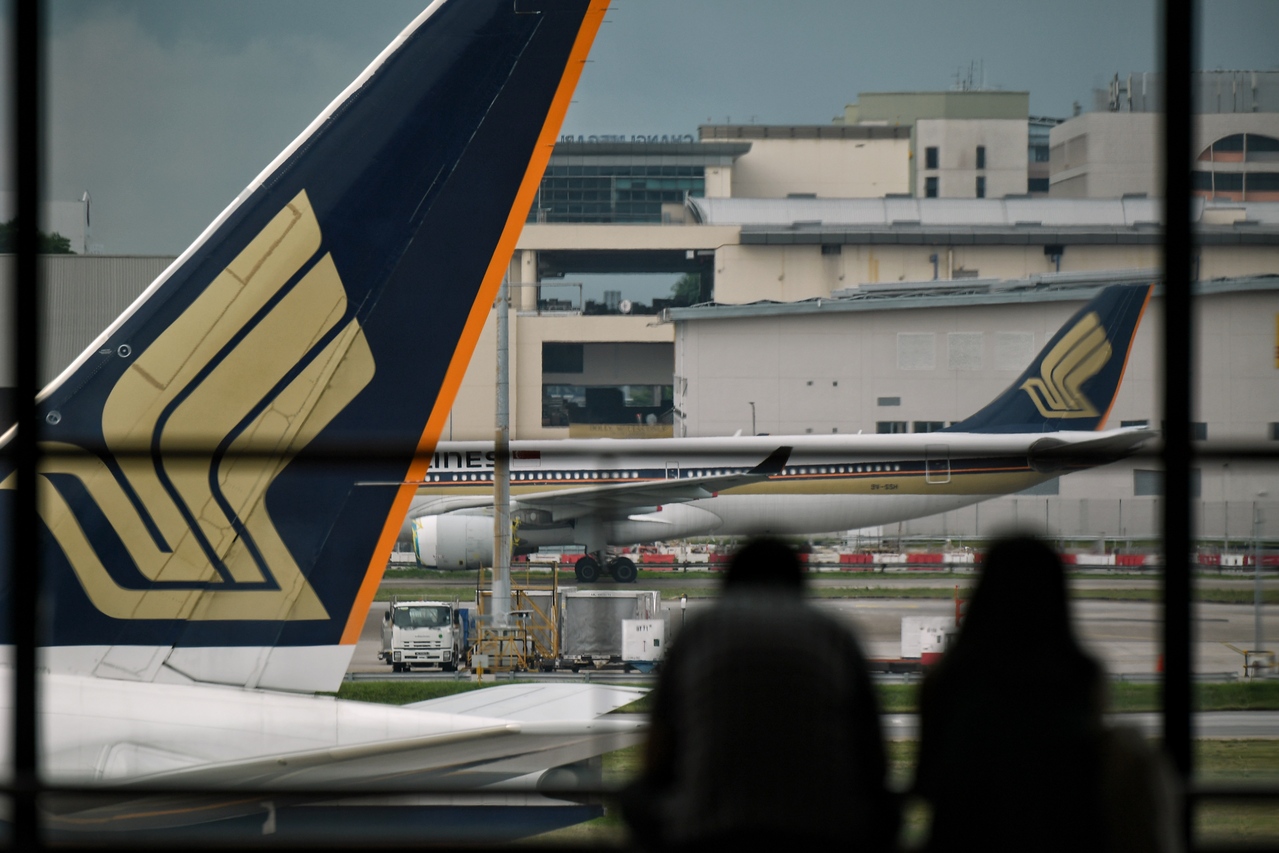SIA's financials see recovery on the back of rising air travel demand
Sign up now: Get ST's newsletters delivered to your inbox

The company posted a $125 million net loss for the October 2021-March 2022 second half.
PHOTO: ST FILE
Follow topic:
SINGAPORE - A nascent recovery in air travel demand enabled Singapore Airlines to cut its net loss for the second half by 85 per cent and bring down its full-year net loss by 75 per cent.
The company posted a $125 million net loss for the October 2021-March 2022 second half. This is significantly down from the $837 million of red ink during the first six months of the current financial year, which began on April 1, 2021.
The improvement in the bottomline came on the back of a 69.4 per cent surge in topline revenue to $4.79 billion during the October 2021-March 2022 second half, compared with $2.83 billion in the previous six months.
But the airline posted an operating profit of $10 million during the April-September 2021 period.
All this translated into a full-year net loss of $962 million, compared with a $4.27 billion loss during the previous financial year ending March 31, 2021.
Revenue for the year to March 31, 2022, doubled to $7.62 billion, from $3.82 billion a year earlier.
But operating losses were trimmed to $610 million, from $2.51 billion during the previous Covid-stricken year.
SIA's balance sheet was relatively stable, with total equity at $22.4 billion, including $4.67 billion in general reserves. Total cash and bank balances stood at $13.76 billion, while total debt was $15.69 billion.
The forward numbers look good thanks to a pick up in air travel momentum. Changi Airport's passenger numbers are now at 50 per cent of pre-pandemic levels and could go higher as the traditional June travel period approaches.
Earlier this week, SIA announced that it and its low-cost airline Scoot had carried a total of 1.5 million passengers in April, up 62.7 per cent from March and a massive 1,216.9 per cent more than the same period a year ago.
The passenger load factor for the month stood at 72.7 per cent, the highest since the onset of the pandemic.
Forward bookings look good.
The company expects passenger capacity to hit 61 per cent of pre-Covid levels during the current April-June 2022 quarter, and 67 per cent of pre-Covid levels during the following quarter.
SIA and Scoot's route network comprise 95 destinations in 37 countries and territories, including Singapore, versus 137 destinations in 37 countries and territories pre-Covid.
The group carried 3.9 million passengers in the 12 months to March 2022, up six-fold from a year before.
Some analysts have turned cautiously upbeat on the stock.
DBS Group Research recently upgraded its call on the Singapore flag carrier to "buy" from "hold" on Tuesday and upped its target price from $4.90 to $6.20, after raising its net profit estimates. The research team noted that SIA's passenger traffic will likely recover faster than anticipated, as reopening in the Asia-Pacific region continues to pick up momentum.
Nevertheless, the airline warned that cargo demand could experience some volatility amid the Ukraine war and the China lockdown. The fuel price has also been rising steeply in recently months, with spot prices of jet fuel now up 50 per cent to US$150 a barrel.
About 43 per cent of the $1.33 billion increase in group expenditure was due to net fuel costs.
SIA's fuel costs more than doubled to $1.38 billion in the six months through March as it operated more flights. Average jet fuel prices have risen 50 per cent over the past year to US$150 a barrel now.
But the airline said it would ensure cost discipline, even as activity picks up.
SIA shares closed up 10 cents or 1.9 per cent to $5.43 on Wednesday.

